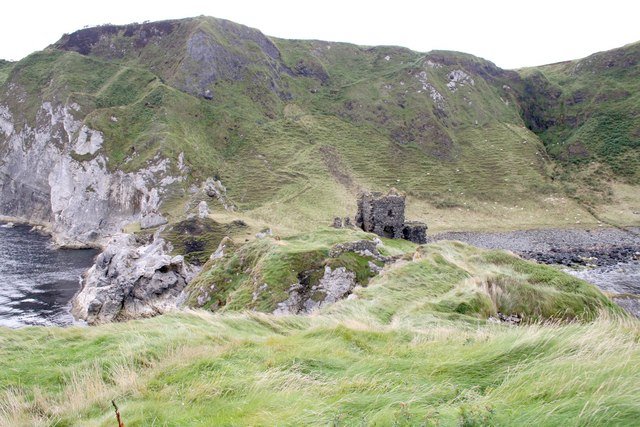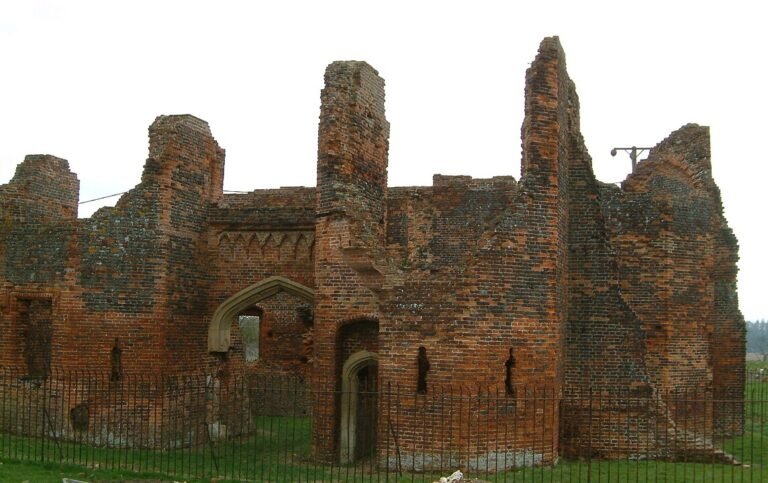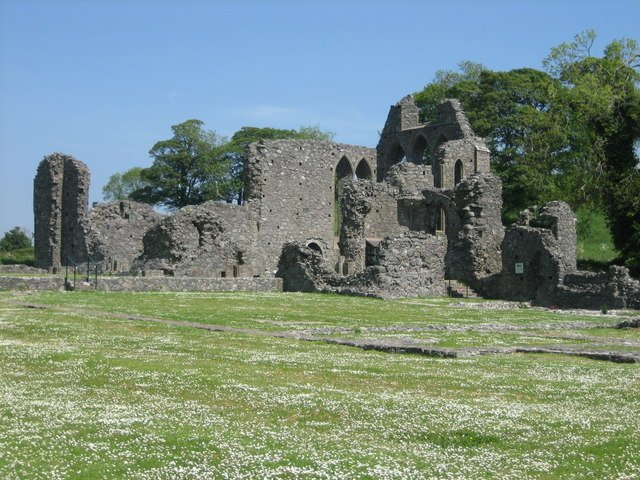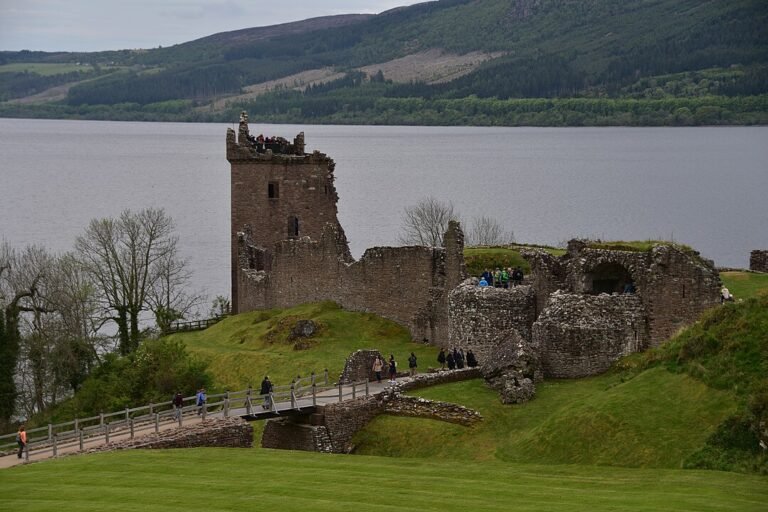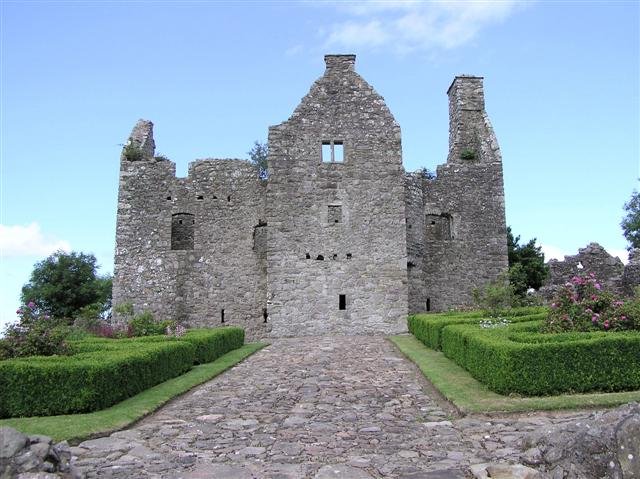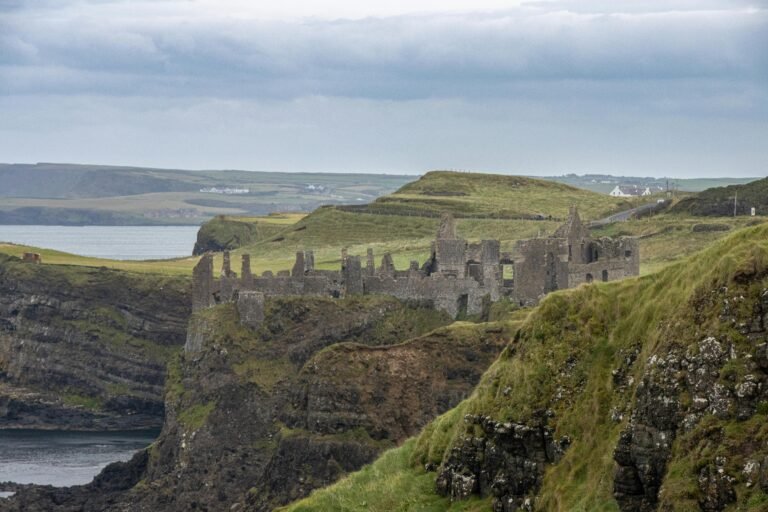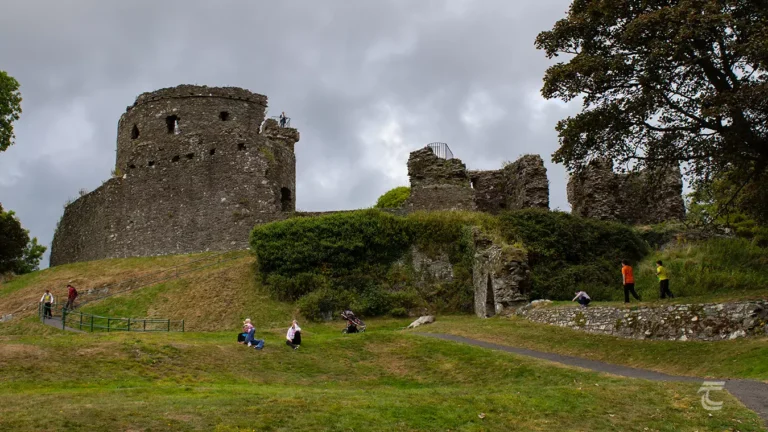Kinbane Castle: History, Travel Tips, and Visitor Guide
Kinbane Castle is one of Northern Ireland’s most atmospheric ruins, perched dramatically on a limestone headland jutting into the North Atlantic. Less visited than nearby Dunluce or Carrick-a-Rede, this 16th-century stronghold offers raw beauty, sweeping coastal views, and a deep connection to Gaelic clan history. This guide explores the history of Kinbane Castle, practical travel advice, nearby attractions, and its place within the broader heritage of castles across the UK.
History of Kinbane Castle
Kinbane Castle was built in 1547 by Colla MacDonnell, brother of the first Earl of Antrim, Sorley Boy MacDonnell. The MacDonnells, originally from Scotland’s Hebrides, established themselves in Antrim during the 16th century, building fortifications along the coast. The castle’s name comes from the Irish “Cionn Bán,” meaning “white headland,” a reference to the pale limestone cliffs on which it stands.
The fortress endured attacks during its lifetime, most notably by English forces in the late 16th century, leaving it partially ruined. Despite its decline, Kinbane remained a symbol of clan power and resilience. Today, only fragments of its tower and curtain walls survive, yet its setting makes it one of the most evocative ruins on the Causeway Coast.
Key Facts and Figures
- Location: 5 km east of Ballycastle, County Antrim, Northern Ireland
- Built: 1547, by Colla MacDonnell
- Meaning: Kinbane = “white headland” in Irish
- Status: Scheduled Historic Monument
- Access: Free to visit, but requires a steep descent via steps
- Nearby Landmarks: Carrick-a-Rede Rope Bridge (5 miles), Giant’s Causeway (15 miles), Dunluce Castle (20 miles)
Why Visit Kinbane Castle?
Kinbane Castle offers a different experience to the more famous castles of Northern Ireland. Unlike the heavily visited Giant’s Causeway or Carrick-a-Rede, Kinbane is quieter, giving visitors a sense of solitude and discovery. The ruins, cliffs, and panoramic sea views create an unforgettable backdrop for exploration and photography.
Its rugged beauty makes it ideal for couples seeking a romantic coastal walk, families keen to explore heritage sites off the beaten track, or solo travellers in search of reflective landscapes.
Visitor Information
Getting There
- By Car: From Ballycastle, drive west along the A2 (Causeway Coastal Route). The car park is signposted, with free parking available.
- By Public Transport: Ulsterbus services run to Ballycastle. From there, taxis are recommended, as buses do not stop at the site.
- By Tour: Some Causeway Coast day tours include a photo stop at Kinbane, though most focus on Dunluce and Giant’s Causeway.
Opening Hours and Accessibility
- Opening Hours: Open year-round, 24 hours a day.
- Admission: Free entry.
- Accessibility: Access involves steep steps and uneven paths, making it unsuitable for wheelchairs and challenging for pushchairs.
- Facilities: No toilets or visitor centre on site; facilities are available in Ballycastle.
Best Time to Visit
Spring and summer offer milder weather and longer daylight hours, ideal for photography and coastal walks. Autumn brings dramatic sunsets, while winter offers solitude, albeit on paths that may be slippery. Early morning or late evening visits are particularly rewarding for avoiding crowds and capturing golden light on the cliffs.
Suggested Itineraries
1-Day Causeway Coast Explorer
- Morning: Start in Ballycastle with breakfast, then head to Kinbane Castle for a 1-hour visit.
- Late Morning: Continue to Carrick-a-Rede Rope Bridge for a cliff walk.
- Afternoon: Drive to the Giant’s Causeway (UNESCO World Heritage Site) for 2–3 hours of exploration.
- Evening: Finish with sunset views at Dunluce Castle before returning to Ballycastle.
2-Day Coastal Heritage Trip
- Day 1: Visit Kinbane Castle, Carrick-a-Rede, and the Giant’s Causeway, overnight in Ballycastle or Bushmills.
- Day 2: Explore Dunluce Castle, the Dark Hedges (famous filming location), and finish with a tour of Old Bushmills Distillery.
Where to Eat Near Kinbane Castle
- Ballycastle: A small seaside town with cafés, traditional pubs, and restaurants serving seafood and Irish cuisine.
- The Bay Café: Known for hearty breakfasts and coastal views.
- Morton’s Fish & Chips: A local favourite for takeaway by the harbour.
- Thyme & Co: Popular for coffee, brunch, and vegetarian options.
Where to Stay Near Kinbane Castle
- Boutique: The Salthouse Hotel, Ballycastle – eco-friendly with spa and coastal views.
- Mid-Range: Marine Hotel, Ballycastle – family-friendly with beach access.
- Budget: Ballycastle Backpackers Hostel – affordable and centrally located.
- Self-Catering: Coastal cottages and holiday lets available via local providers.
Events and Seasonal Highlights
- Spring: Wildflowers bloom around the cliffs, creating colourful landscapes.
- Summer: Ballycastle hosts the Ould Lammas Fair, one of Ireland’s oldest traditional fairs.
- Autumn: Migratory birds can be spotted along the cliffs, ideal for birdwatchers.
- Winter: Low crowds and stormy seas create dramatic photographic opportunities.
Kinbane Castle in the Wider Context of UK Castles
While Kinbane is modest compared to the grandeur of Edinburgh Castle or the scale of Caernarfon in Wales, it epitomises the rugged coastal castles of the UK. Similar atmospheric ruins include Dunluce Castle (Antrim), Tantallon Castle (Scotland), and Tintagel Castle (Cornwall). Each highlights how castles were not only military structures but also cultural markers of clan, kingdom, and legend.
FAQs about Kinbane Castle
When was Kinbane Castle built?
Kinbane Castle was constructed in 1547 by Colla MacDonnell, a member of the powerful MacDonnell clan.
Is there an entry fee for Kinbane Castle?
No, visiting Kinbane Castle is free of charge. The site is open year-round with no admission fees.
How do I get to Kinbane Castle?
Kinbane Castle is located 5 km east of Ballycastle, County Antrim, along the Causeway Coastal Route. A car park is available, followed by a steep descent of steps to the site.
What facilities are available at Kinbane Castle?
There are no facilities on-site. Visitors will find toilets, cafés, and shops in Ballycastle, a short drive away.
Final Thoughts
Kinbane Castle may be a ruin, but its dramatic cliffside setting, rich clan history, and peaceful atmosphere make it one of Northern Ireland’s hidden treasures. Whether as part of a day trip along the Causeway Coast or a longer heritage journey across the UK, it offers travellers a chance to connect with the raw beauty of Ireland’s past.
Location: Kinbane Castle
